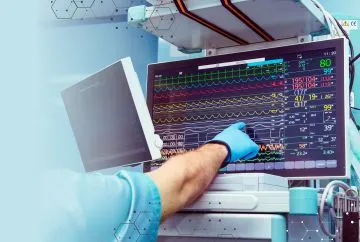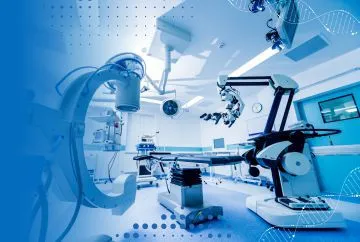MDM creates a master record, a single source of truth, by integrating assets from all data sources and applications within an organization. This centralized repository contains accurate, reliable, and trustworthy data that’s easy to understand and can facilitate strategic decision-making throughout the enterprise.
Top Triggers Behind the Rise of MDM in the Medical Device Industry
Before the pandemic, people were more invested in fitness and “anytime, anywhere” healthcare managing their health, partly due to easier access to affordable wearable devices and digital health monitoring solutions.
When the pandemic hit, it gave the trend of consumer-driven healthcare, wellbeing, and telehealth solutions an adrenaline boost, skyrocketing the demand for smart medical devices and wearables. According to Fortune Business Insights, the global medical devices market is projected to grow at a CAGR of 5.4%, from $455.34 billion in 2021 to $657.98 billion in 2028.
Simultaneously, it accelerated digital transformation initiatives and mergers and acquisitions while tightening regulatory compliance. These led to an acute need for robust master data management in healthcare. Let’s look at each of the underlying triggers.

M&A in Medical Device
The pandemic was devastating, but it also brought opportunities. The firms that spotted them amassed massive profits, while others got decimated. Medical device manufacturers witnessed soaring sales and used their profits to boost their core capabilities and market position by scooping up smaller, indirect competitors. At the same time, some of the weakened firms joined hands to have a shot at challenging their newly strengthened competition.
One of the largest healthcare deals of 2021 was the purchase of radiation therapy device and software manufacturers Varian Medical Systems by MedTech giant Siemens Healthineers. The MedTech firm spent a whopping $16.4 billion to clinch the deal and expand its oncology portfolio.
Customer Data Insights
30% of the world’s data comes from the healthcare industry. An IDC study reported that health care data will grow at a CAGR of 36% by 2025, faster than other industries such as manufacturing or financial services. An increase in M&A deals coupled with the increasing adoption of smart healthcare devices is driving the trend. This treasure trove of customer data is everything manufacturers need to extract granular insights into customer needs and behavior that fuel medical device innovation and boost their competitive edge—tapping into the vast potential of such data warrants a solid master data management strategy and framework.
Medical Device Regulatory Compliance
The explosion in medical device customer data provides the industry an edge but also comes with a catch. Leveraging patient data shouldn’t lead to security and privacy risks that expose sensitive information. In addition to hefty fines for data breaches, medical device firms will also incur irreparable damages to their reputation.
Moreover, rising trade disputes and geopolitical risks make the regulatory landscape more challenging, and navigating it skilfully requires medical device firms to have comprehensive data governance and security policies in place. That’s why the need for MDM in the medical device industry is on the rise.
Use Cases of MDM in Medical Device Industry
Now that we’ve established why effective medical device data management is the need of the hour for medical device firms let’s look at five of its most prominent use cases.

#1 Accelerated Product Launches
The competitive edge for medical device firms lies in shorter product development cycles and quicker turnaround times. However, faster time-to-market relies on the quality, integrity of the entire product dossier, which must meet increasingly complex and changing global regulatory compliance mandates, like UDI in the US and EU MDR/IVDR. Failure to do so can lead to a significant waste of time, resources, funding, and lost revenue opportunity.
MDM can automate data aggregation from diverse sources, run quality and integrity checks, manage complex phase-gates approval workflows and then submit the required data following the regulations for speedier approvals, decreasing time-to-market, reduced risk of non-compliance and accelerating product launches.
#2 Market Feedback-Driven Product Improvements
MDM technologies support real-time ingestion of large volumes of data from various sources on a single, unified platform. As a result, medical device firms can leverage these technologies to capture market feedback at every step in real-time.
Using this information, firms can eliminate inconsistencies or defects within their products as and when they occur, thereby delivering product improvements faster. Medical device firms can boost sales, grow market share, and elevate the overall customer experience by tailoring products per market demands and delivering exceptional eCommerce experiences.
#3 Medical Device Registration Tracking
UDI (Unique Device Identifier) helps ensure the legitimacy of medical devices by registering their codes within the databases of regulatory bodies. As a result, any device with an authentic UDI can be traced right back to its point of origin if there’s an issue with the device. For example, if a particular batch of oximeters is faulty, tracing the UDI helps recall just the faulty devices, which is cheaper and more efficient than recalling every oximeter sold.
MDM maintains comprehensive records of all medical device registrations in a single repository, streamlining the entire tracking process.






